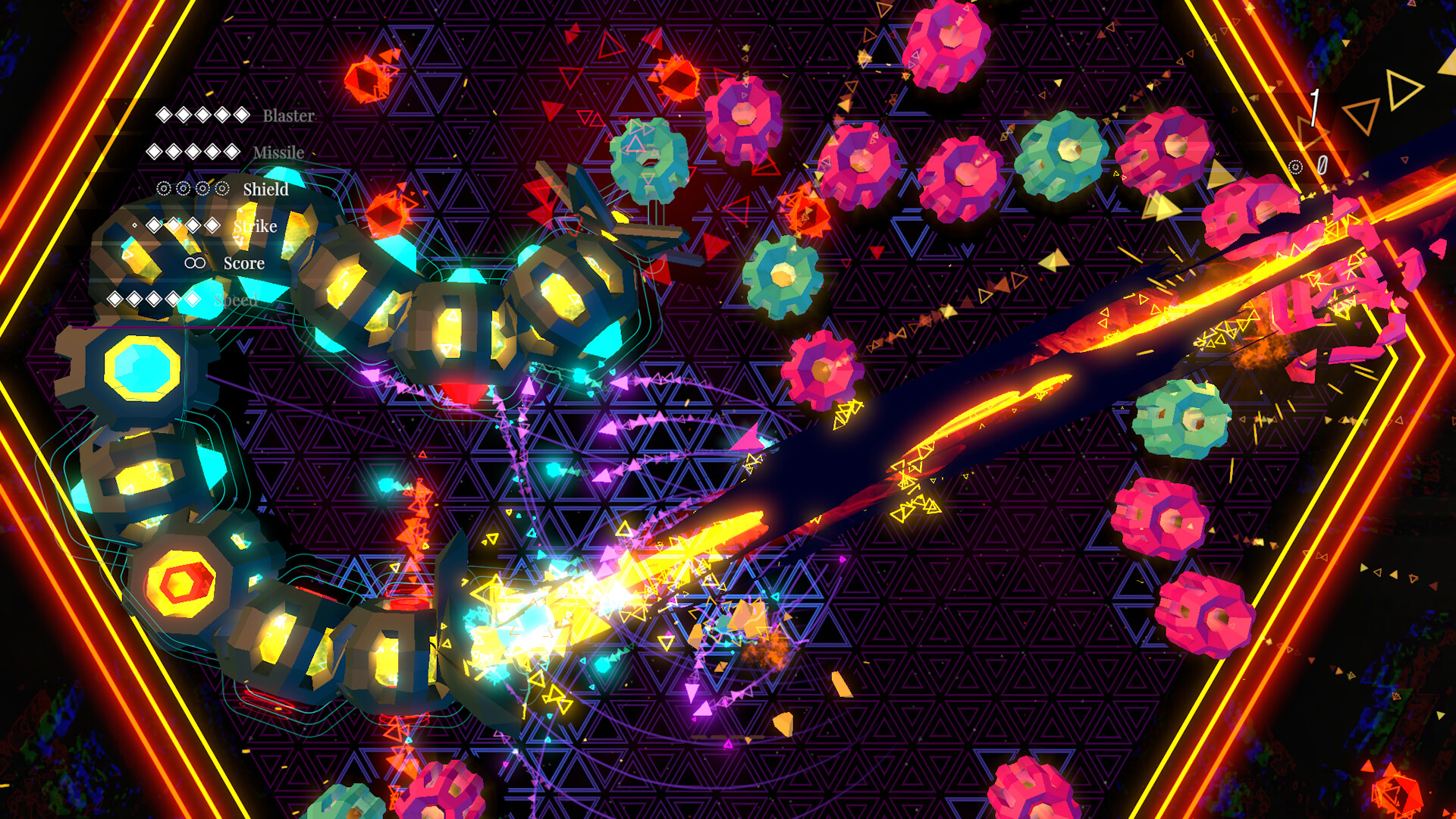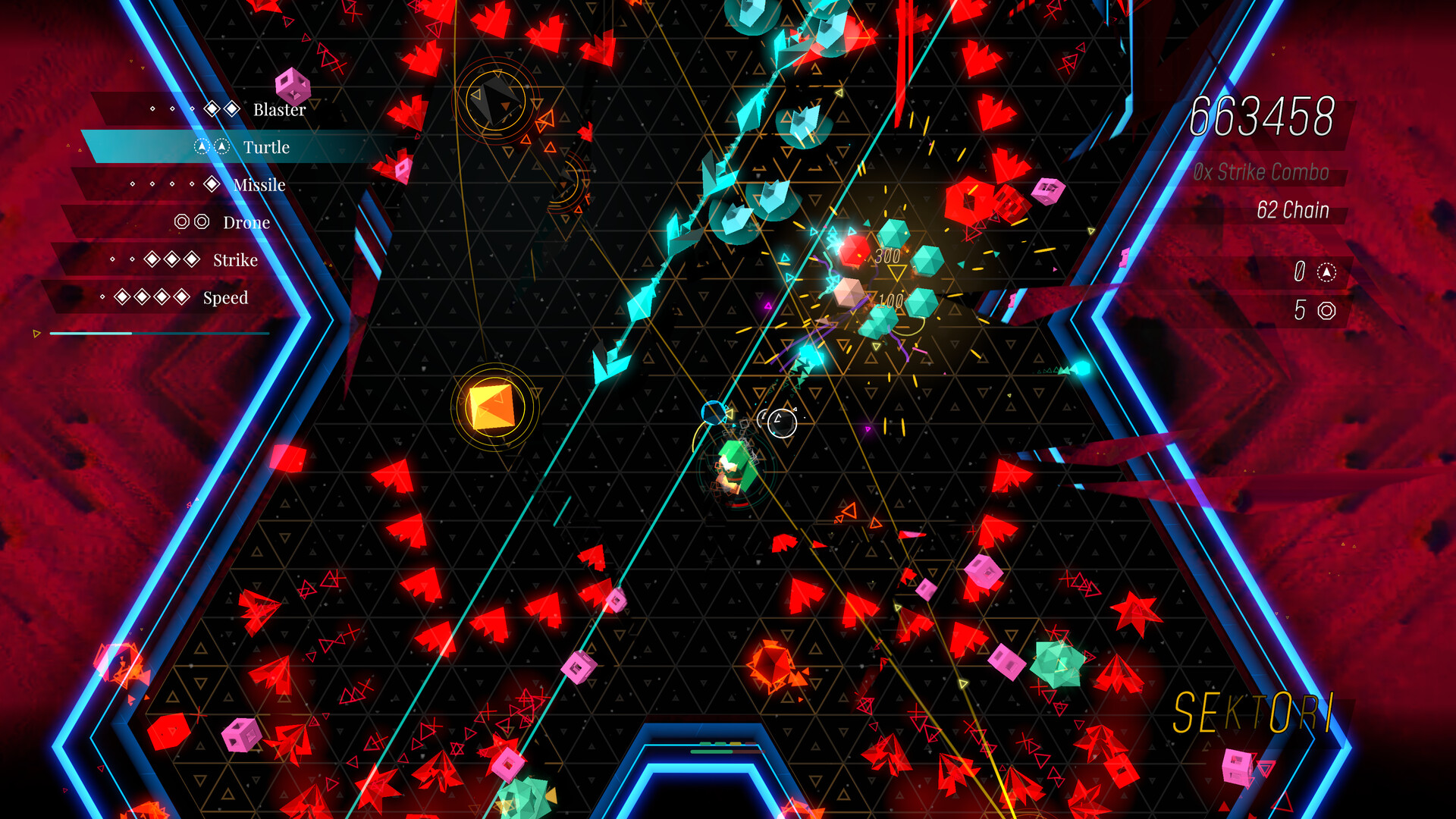
November has been an absolutely huge month for games, between AAA staples like Call of Duty: Black Ops 7, ongoing successes like Arc Raiders and Dispatch (both technically released in October, but have each dominated the conversation this month) and indie triumphs like Demonschool. But the game that has hooked me in more than any other this month isn't likely to come up in conversation.
Sektori is a twin-stick developed by former Housemarque developer Kimmo Lahtinen, most easily described as a roguelike take on Geometry Wars. Yes, it's another game that borrows that three-card upgrade system from Vampire Survivors and slaps it into a familiar experience, but not only does this work extremely well, it's also only a fraction of what makes Sektori great.
I wrote a little about Sektori a while back, but at that point I'd only played the demo. I took an early copy on holiday with me a couple of weeks back, planning to check it out among a bunch of other games. Instead, I just played Sektori. For 40 hours. And I've still yet to actually beat it.
As I mentioned, Sektori's basic formula is similar to Geometry Wars 3. You control a "ship" shaped like an arrow in a shapeshifting arena prowled by rogue polygons that behave in different ways. There are hollow pink cubes that roll randomly around, blue pluses that always home in on your position, and nasty yellow razor blades that only approach when you're not looking at them. You can shoot these shapes with a blaster, or "strike" them with your ship, sending out a little shockwave that will destroy other, nearby shapes.
The visual presentation of this is peerless. While it seems simple at first, Sektori quickly escalates into a firework display of colour, accompanied by a mesmerising rave-like soundtrack. Even the menu music beats like the heart of a cocaine-addicted elephant, getting you bobbing your head like a parakeet before you've even started playing.
Sektori couples this with a merciless level of challenge that means the game demands your complete and utter attention. Your starting shield can only take three hits before you're exposed to instant death, which isn't a lot when the number of enemies on screen increases at an exponential rate. On top of that, the arena itself is against you. If you're caught out of bounds when it morphs into a new form, it's an instant game over.
It took quite a while before I could survive longer than a minute in Sektori's polygonal threshing machine. But I began to make headway once I'd figured out its deliberately byzantine upgrade system. Destroyed enemies leave behind little triangles that you collect, and if you collect enough of these, a blue upgrade token will appear somewhere on the map. Pick this up, and you can spend it immediately to gain a speed boost.
Keep up to date with the most important stories and the best deals, as picked by the PC Gamer team.

Alternatively, if you save up these tokens, you can spend them on improving your strike damage, adding missiles to your ship, or loading more shots into your blaster. But you can only select an upgrade once you've collected the requisite number of tokens, and if you go one over, you'll have to wait until you've cycled back around to it, so it's important to keep careful track of what you want to upgrade.
On top of this, yellow "Evolve" tokens will randomly appear on the arena too. Picking these up lets you choose from one of three upgrades sourced from various card decks, ranging from adding satellite drones to your ship that improve damage output, to giving you a "Megablast" that will wipe out every enemy on the screen in one go. You can access eight card decks in a run at any time, and more are unlocked as you play.
Once you click with this system, you'll go from having your back against the wall to chewing through stages, annihilating everything. The tutorial hints recommend you pick up speed upgrades first, but I like to wait and unlock the first missile tier, as it makes it significantly easier to clear a path of enemies and hoover up all of those juicy triangles. There are tons of little tricks you can pull off too. Your strike ability instantly reloads if you collect a token or hit another object (like bounce-pads) while striking, letting you chain together strikes in a tremendously satisfying manner.
Sektori is also just a constant spectacle. As you play, you can collect letters that spell out the word "MIRAGE". Doing this activates Rainbow Mode" whereupon the screen explodes with colour and you become practically invincible for 30 seconds. Then there are the bosses—enormous, screen filling deathtraps that are truly terrifying to contend with, like a giant snake that leaves exploding mines in its wake, and an enormous, projectile spitting tower that causes the whole arena to list to one side when it appears.

The bosses are where my one gripe with Sektori lies, though: the first boss encounter tends to be a bit too hard relative to everything else. Like much of the game, the boss you face at the end of each stage is chosen randomly. But I think most of them are slightly too difficult for that initial fight, as you're not quite powerful enough to deal with everything they throw in your direction. If I got past this stage, typically I'd make it through to the final encounter, so a tweak to smooth out this difficulty spike wouldn't go amiss.
That really is my only complaint, though. I've played a lot of games that are time-wasters or time-consumers, but Sektori is one of the few that I'd dub a time-expander. So much happens in the minutes each run lasts that the seconds seem to stretch out, and you'll blink back into reality thinking you've been playing for an hour when really it's only been ten minutes. It's easily one of my favourite games I've played this year, and now a permanent fixture on my Steam Deck.
Best laptop games: Low-spec life
Best Steam Deck games: Handheld must-haves
Best browser games: No install needed
Best indie games: Independent excellence
Best co-op games: Better together
Rick has been fascinated by PC gaming since he was seven years old, when he used to sneak into his dad's home office for covert sessions of Doom. He grew up on a diet of similarly unsuitable games, with favourites including Quake, Thief, Half-Life and Deus Ex. Between 2013 and 2022, Rick was games editor of Custom PC magazine and associated website bit-tech.net. But he's always kept one foot in freelance games journalism, writing for publications like Edge, Eurogamer, the Guardian and, naturally, PC Gamer. While he'll play anything that can be controlled with a keyboard and mouse, he has a particular passion for first-person shooters and immersive sims.
You must confirm your public display name before commenting
Please logout and then login again, you will then be prompted to enter your display name.



